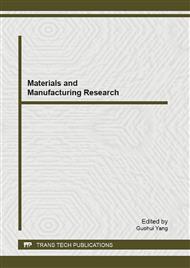p.305
p.311
p.318
p.323
p.327
p.335
p.340
p.345
p.350
The Statics and Dynamics Analysis of High-Dynamic Flight Simulator Based on Substructure Method
Abstract:
In this paper, the most serious loads configuration of High-Dynamic Flight Simulator (HDFS) was found firstly by rigid-body dynamics analysis, then level-by-levelfinite element analyzing based on substructure method for HDFS under the configuration above was carried out, from which we got the statics characteristic of arm/gondola frame/gondola and the dynamics characteristic of the overall structure respectively. Such analysis strategy couples the stiffness matrix and mass matrix of lower-level structures to upper-level structures, and takes the deformation of upper-level as boundary condition for lower lever by displacement coordinate relationship between them, consequently, the accuracy of this strategy is reliable, and the computational efficiency is evidently improved. Analysis results show that the statics and dynamics characteristic of HDFS could be carried out by the level-by-level analyzing strategy effectively and soundly. This kind of analysis strategy is able to extend to other multi-level structures, such as flight simulator, centrifuge, multi-axis turntable et al.
Info:
Periodical:
Pages:
327-334
Citation:
Online since:
January 2013
Authors:
Price:
Сopyright:
© 2013 Trans Tech Publications Ltd. All Rights Reserved
Share:
Citation:


